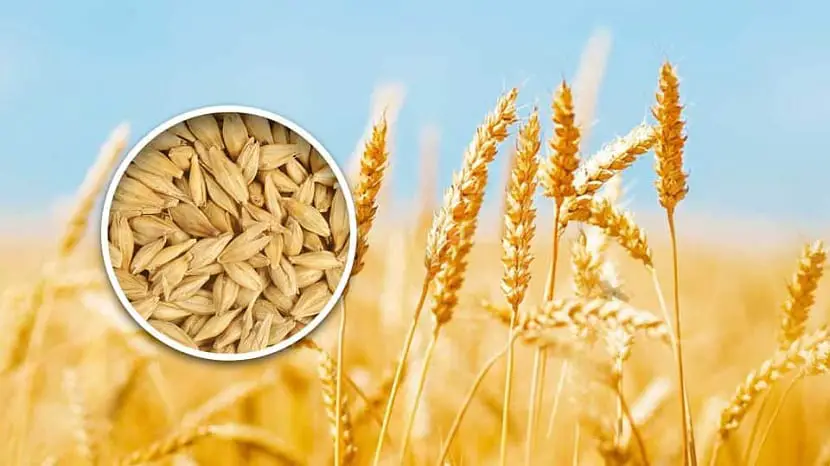

Today we are going to talk about the cultivation of barley. Its scientific name is common barley and its cultivation is known to all since ancient times. The origin of this crop is from both Southeast Asia and North Africa. It is thought to be one of the first plants that began to be used when agriculture first originated among humans. Many people have found barley remains in archaeological excavations over 15.000 years old.
For all these reasons, we are going to focus this article on barley. You can learn about its characteristics and cultivation.
Barley characteristics


It is a plant belonging to the Poaceae family. Those that are cultivated are distinguished from the natural ones by the number of spikelets that remain on each tooth of the rachis. Its leaves are light green and narrow in shape. It differs from wheat in that it has a lighter green color and that of wheat is more upright during the first stages of its growth.
As for the roots, it has a fibrous root system that does not reach too deep if we compare it with other cereals. If the conditions and their growth is good, they barely reach 1,20 meters deep. 60% of all roots are in only the first 25 cm of the ground.
It has a thick, erect stem that is made up of between 6 and 8 internodes. These between nodes have a greater thickness in the central part. Depending on the variety of barley that we are growing, the length of the stem changes. Nevertheless, the average height oscillates between 50 cm.
The flowers are located in three stamens and a pistil with two stigmas. It is a self-pollinating plant that opens after fertilization. This is important for the preservation of the characteristics of a given variety in the future.
Barley requirements
Weather


In order for barley to be grown in good conditions, certain requirements must be met. The first thing to consider is the weather. Although it is not overly picky about the weather, it does need it to be cooler and moderately dry in order for it to thrive. By not being too demanding with this, we can find barley widespread throughout the world. It needs less heat to be able to reach maturity, so it can be found both at high latitudes and at high altitudes. For example, in Europe you can see barley crops located at 70 degrees north latitude. In other countries like Peru, we can find barley grown at 3.000 meters high.
This at altitudes is due to the fact that cereals have a great capacity to adapt at heights. For this to flourish, it must be ensured that the precocious species are caught.
Another requirement we have is temperature. For barley to germinate, we need a minimum temperature of 6 degrees. So that it can bloom, about 16 degrees and, to fully mature, it will need about 20 degrees. As you might expect, in many parts of the world there are frosts during winters. In these cases, do not worry too much because it can withstand up to -10 degrees. If we are in climates where the winter frosts are too strong, it is better to sow those spring varieties. This will cause them to begin to develop around the time all frosts are over.
Land


As for the soil, barley needs fertile soils. Although you can have good productions in not too deep and stony soils, it is better if the soil is fertile and the roots can grip well. It can survive well as long as, at the beginning of its development it does not lack irrigation. By tolerating good salinity levels, barley can also be sown in fields close to the coast. He does not want soils that are too clayey or that are compact. This is because germination is made difficult by having to go through compacted soil and reduces the early stages of plant growth.
Other soils that They are not good for barley, they are those that are humid and prone to waterlogging. It is true that it is necessary to conserve a certain degree of humidity in the crops, but only just enough. If the irrigation water ends up accumulating, the roots will drown and will not be able to grow. If you have a clay soil, you can do a good tillage with which you can conserve soil moisture but achieve good drainage.
With soil with an excessive nitrogen content, lodging can form and increase the percentage of nitrogen that we find in the grain to inappropriate levels. This sometimes occurs when crops are used to make malt into beer.
Regarding the amount of calcium you need, it is quite tolerant. It is able to survive in limestone soils. Although it is able to withstand a wide pH value, it prefers loamy soils that are not poor in organic matter, but have a high potash and lime content. It is the only cereal that is so tolerant of salinity. It can tolerate quite high values without diminishing the yield in the crops.
Irrigation


Because barley has a higher coefficient of transpiration than wheat, having a shorter cycle it absorbs less water in total. One of its advantages is that it requires more water at the beginning than at the end, so that a large irrigation is not needed when the crop has reached maturity. This is the reason why it is often said that barley is more resistant to drought than wheat. And it is that, since it needs less irrigation, it does not matter that it has a higher coefficient of perspiration. This makes it more resistant to drought.
If we go overboard with irrigation, barley is very prone to scaling, so we must be careful.
I hope that with these tips you can learn more about growing barley.

